Below are brief explanations of common attributes given to saints to identify them in art. (This page is constantly being updated).
St. Ambrose

St. Andrew

St. Anthony the Great

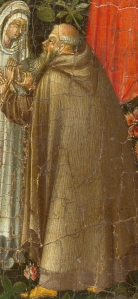

St. Anthony’s major attribute is a small bell. He also is usually pictured holding a rosary and his abbot’s staff.
St. Augustine


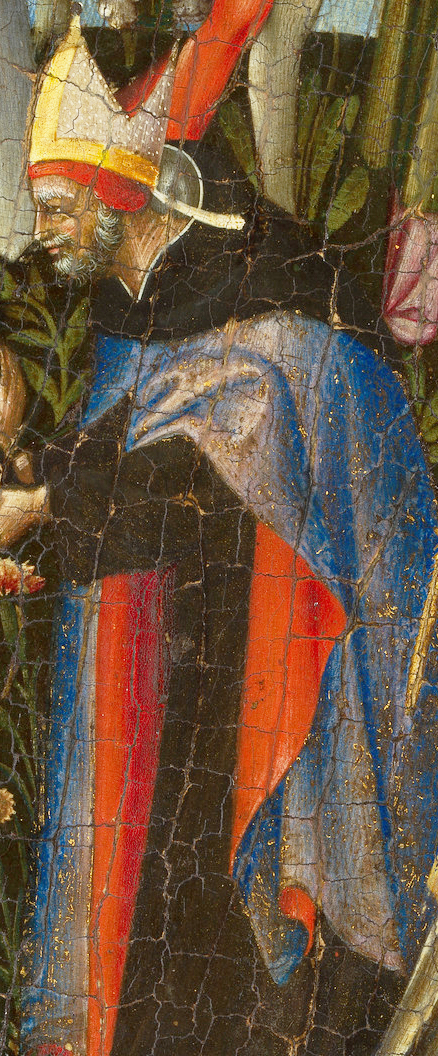
St. Augustine was a early Church father, famous for his prolific writings on the Church and morality, known as Confessions; thus, he is typically shown writing, dressed as a bishop.
St. Barnabas


St. Benedict



St. Benedict is the founder of the Benedictine monastic order.
Saint Bartholomew

Saint Bernard of Clairvaux


Saints Cosmas and Damian


Saints Cosmas and Damian are typically portrayed together, as they were brothers (some sources claim twins). They were the patron saints of physicians and therefore closely linked to the Medici, the ruling family of Florence, due to the play on the Medici name (“medici” is the Italian word for “doctors”). They are usually depicted in red togas and red caps. Sometimes, they are shown with surgical tools or ointment jars laying near them, denoting their status as doctors.
St. Catherine of Alexandria


According to Christian belief, St. Catherine of Alexandria was an Egyptian woman of noble birth who was persecuted by Emperor Maxentius. She was to be killed on a spiked wheel, but upon her touch, it broke. Thus, her main attribute in paintings is a spiked wheel. She was subsequently beheaded.
St. Dominic

St. Eligius


St. Eligius was the patron saint of the Florentine guild of goldsmiths.
St. Eustace and St. Theopista
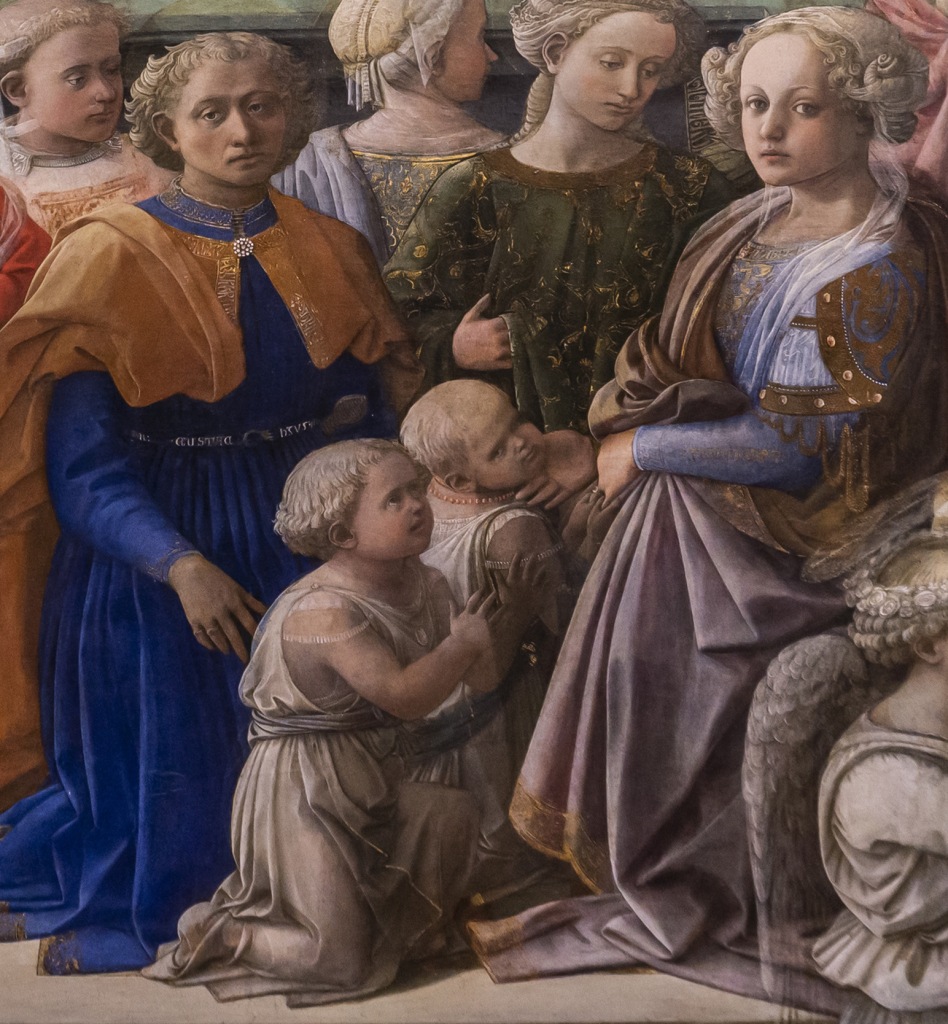
St. Francis




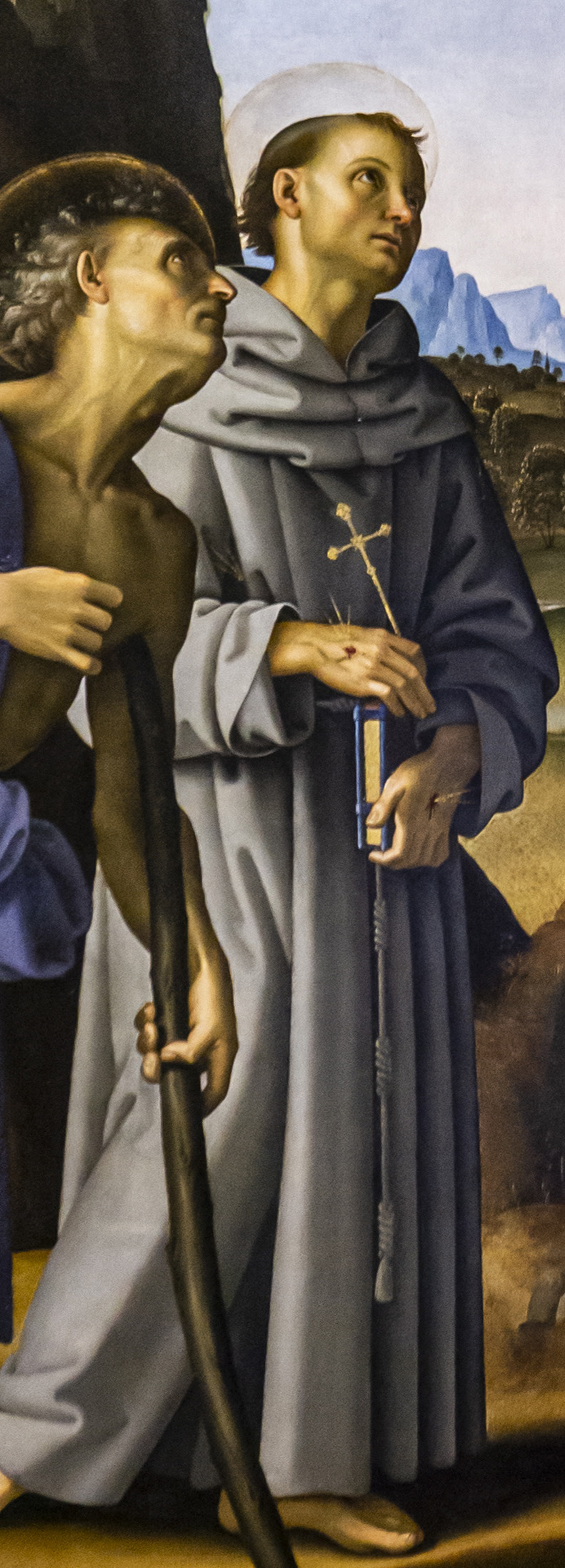

St. Francis (1181/2-1226) founded the Franciscan monastic order. He is generally depicted in his monk’s habit with the stigmata (i.e. the wounds of Christ) on his hands.
The Archangel Gabriel
Typically depicted holding the lily he gave Mary during the Annunciation.


St. Ignatius of Antioch

St. James the Elder

St. Jerome



Saint Jerome’s major identifier is his tamed lion, whom he allegedly met while living in the wilderness, and will typically have a red cardinal’s hat on or near him.
St. John the Baptist








A popular subject among Renaissance artists is St. John the Baptist. St. John the Baptist was believed to be Jesus’ cousin; his epithet derived from his role in Jesus’ baptism. Generally, St. John is recognizable via his animal hair tunic, his reed or processional cross, his untamed hair, and/or his scroll. He is also generally depicted as younger, emaciated, and disheveled. In fact, St. John the Baptist is one of the only saints depicted in art as a child:


St. John the Evangelist


St. John the Evangelist was the patron saint of the Florentine silk guild. As an evangelist, he is shown with a book, denoting him as one of the authors of the Gospel.
St. Justus of Lyons

St. Lawrence

St. Lucy
St. Lucy is identifiable because she generally holds a plate holding her own eyes.
St. Margaret of Antioch
St. Margaret of Antioch, also known as St. Margaret the Virgin, is usually shown either emerging from a dragon’s mouth or standing atop a dragon. Indeed, allegedly, St. Margaret was devoured by the devil while he was in the guise of a dragon. The devil, however, could not stomach her and spit her out unharmed.

St. Martin

Mary Magdalene
Mary Magdalene is often depicted with an ointment jar, and she is typically placed on the Virgin’s right, in a place of honor. She also appears regularly in a red cloak, in contrast to the Virgin’s blue, with her hair loose down her back.


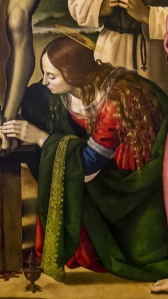



St. Matthew the Evangelist


Saint Matthew the Evangelist is generally pictured holding a Bible, an allusion to his contribution to the New Testament, the Gospel of Matthew.
The Archangel Michael


The archangel Michael is famous for sending Lucifer to hell. Thus, he is generally depicted in his armor, carrying his sword, known as the Sword of Victory, and a small globe. Also, because he is an angel, he usually is depicted with wings.
St. Miniatus


St. Miniatus is a Florentine saint, who is regularly depicted in Florentine altarpieces.
St. Monica
St. Monica was the mother of St. Augustine.

St. Nicholas

St. Paul

St. Paul is identifiable via his long, pointed beard and (usually) bald head. He is also generally holding a sword, an allusion to his martyrdom (he was beheaded by Romans), and a book, a reference to his epistles.
St. Peter



One of the most well known of the saints is St. Peter (for whom the Vatican’s Cathedral is named). According to the Bible, St. Peter led his fellow 12 Apostles after Jesus was crucified, and as the leader of the early Church, he is considered by the Church to be its first pope. He is typically depicted with a set of keys (which has been incorporated into Papal coat of arms, as a nod to its first pope) because Jesus is supposed to have told him that he would give St. Peter the keys to the Kingdom of Heaven (“I will give you the keys of the kingdom of heaven, and whatever you bind on earth will be bound in heaven, and whatever you loose on earth will be loosed in heaven.” Matthew XVI:19). He also is usually depicted balding with a short white square-shaped beard, holding a book, and wearing blue and yellow.
St. Peter the Martyr

St. Peter the Martyr, also known as Peter of Verona, is instantly recognizable due to his Dominican habit (he was a Dominican monk) and the gash atop his head, a reference to his murder by an axe to the head.
The Archangel Raphael

Raphael is an archangel and therefore is generally depicted with wings. His usual identifier that separates him from the other archangels is a jar of ointment because he is associated with healing. Indeed, in the most well-known Raphaelite legend, Raphael is responsible for curing the blindness of the father of a young man named Tobias.
St. Thomas the Apostle

St. Thomas the Apostle is sometimes pictured with a spear in his hand, which references his martyrdom. Allegedly, St. Thomas was killed in India by a spear.
St. Vincent of Saragossa

St. Vincent of Saragossa is generally shown carrying a ship and/or a millstone, an allusion to the fact that his body was thrown into the sea after he died. He is also sometimes depicted holding a palm, the universal symbol of martyrdom.
St. Vittore

St. Zenobius




St. Zenobius is a patron saint of Florence, Italy. Allegedly, St. Zenobius saved Florence from the Ostrogoths in AD 405 when he was bishop of Florence. St. Zenobius is most famous for his uncanny ability to bring people back from the dead. Because he was the Bishop of Florence, he is usually shown dressed as a bishop.